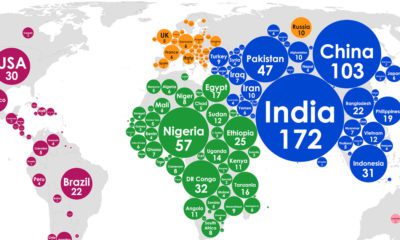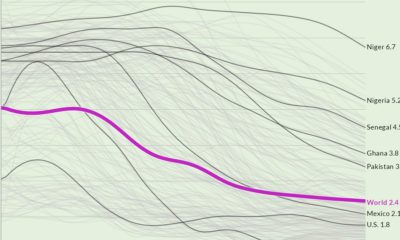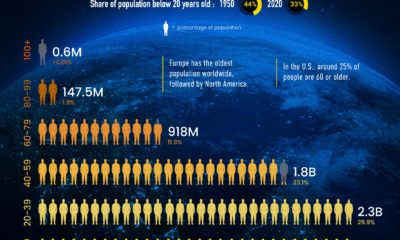

See how the world's 6 largest countries will grow (or shrink) by 2075, based on the latest UN population projections.


For the last 70 years, birth rates for the 49 most populous countries of the world have fallen sharply, heralding an uncertain future.


These charts highlight the changing world population between 2022 and 2050, showing which countries are growing—and shrinking—the fastest.


The EU's population is aging rapidly. By 2100, more than 30% of the region’s population is expected to be 65 or older.


This graphic paints a picture of the world's population, showing which countries are most likely to welcome the next 1,000 babies.


Since 1950, global fertility rates have decreased steadily. Now. the average woman has less than 3 children on average.


Nearly 60% of the world's population lives in cities and this trend is not slowing down—take a look at the world's 20 fastest growing cities.


33% of the world's population is under 20, making young people the largest demographic worldwide. But this might not be the case forever.